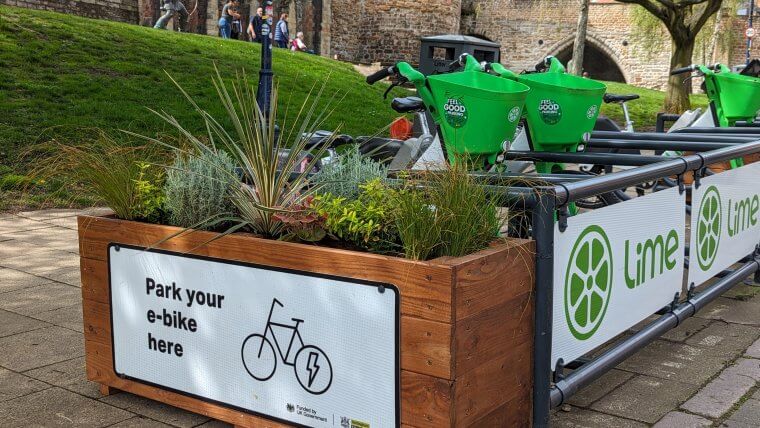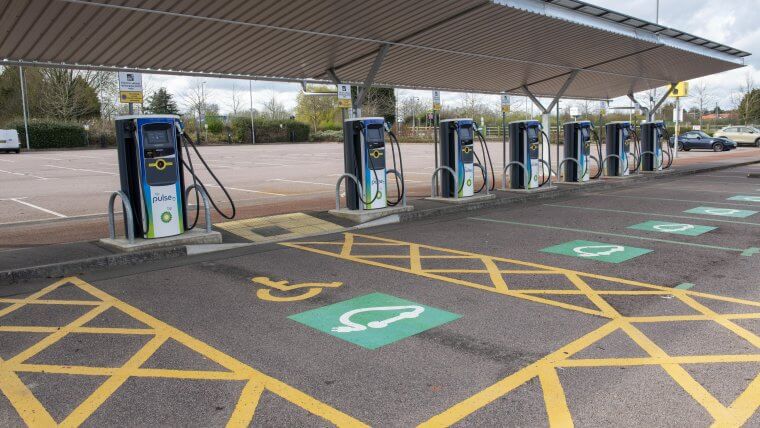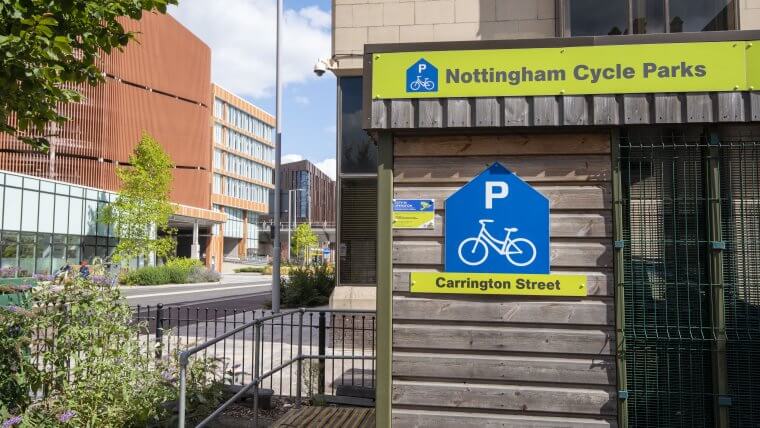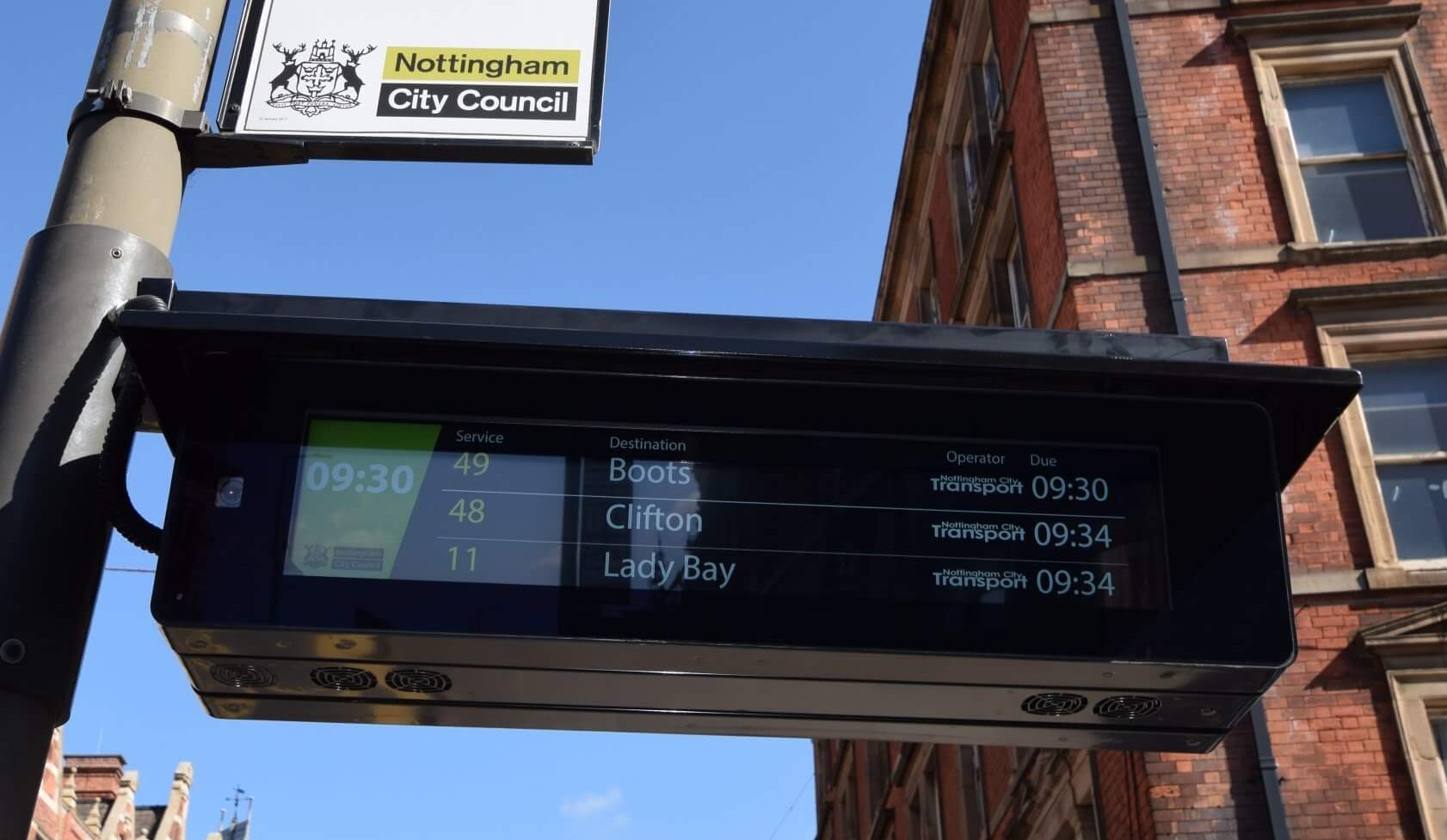
An introduction to real time
Good public transport infrastructure is essential to making sure people can get around and travel with ease.
A key part of this infrastructure is how the availability of public transport services is communicated. Across Nottingham and the wider area, we aim to provide a reliable real time passenger information (RTPI) system that provides accurate service information and increases passenger confidence in their services.
Knowing the need for reliable bus service information, Nottingham City Council have partnered with Nottinghamshire County, Derby City and Derbyshire County councils. Together we have established a collaboration called the D2N2 Real Time Passenger Information (RTPI) partnership, which aims to improve the accessibility to and quality of live public transport information for the services connecting our communities. The historical and primary focus has been on bus service information, but we also recognise the importance of integrating tram and rail information, particularly at locations where passengers can interchange between all three modes.
In 2020, the Council was successful in obtaining funding from the Government’s Transforming Cities Fund – £4m of which was allocated to improving the real time information network. Currently the region has around 2,000 displays, which is an estate larger than any outside of London and provides approximately 125 million bus passenger trips a year with “next bus” information in real time. Our goal now is to use this funding for two distinct projects which will update and upgrade the real time network for the benefit of our citizens and visitors for years to come.
Digital passenger information display upgrades
The first project aims to upgrade the existing and ageing stock of real time displays. Some of the older displays that are approaching the end of their life and are suffering from reliability problems will be replaced by new displays that are more technologically advanced and can provide a wider variety of information to passengers. These TFT (Thin Film Transistor) displays are more reliable, and provide sharper graphics which will make it easier for some people with sight impairments to read. TFT displays also use less energy than the older models and can run basic troubleshooting diagnostics and software fixes remotely.
Additionally, we will continue improving the connectivity of the original LED displays by replacing radio antennae, that are prone to breaks and failures, with built-in SIM cards that operate on a more reliable 4G network. This will provide a more consistent connection for sharing live public transport information.
These upgrades will allow public transport operators to share their service details more effectively, and will modernise the appearance of interchanges and bus stops along high frequency bus corridors.
Finally, digital journey planning totems are being installed at key interchanges. These locations include Nottingham railway station, around Nottingham city centre, Nottingham Trent University campuses and University of Nottingham campuses. These journey planning totems will provide touchscreen journey planning information and local points of interest. Not all of the totems are interactive ready yet, but they will be over the coming months.
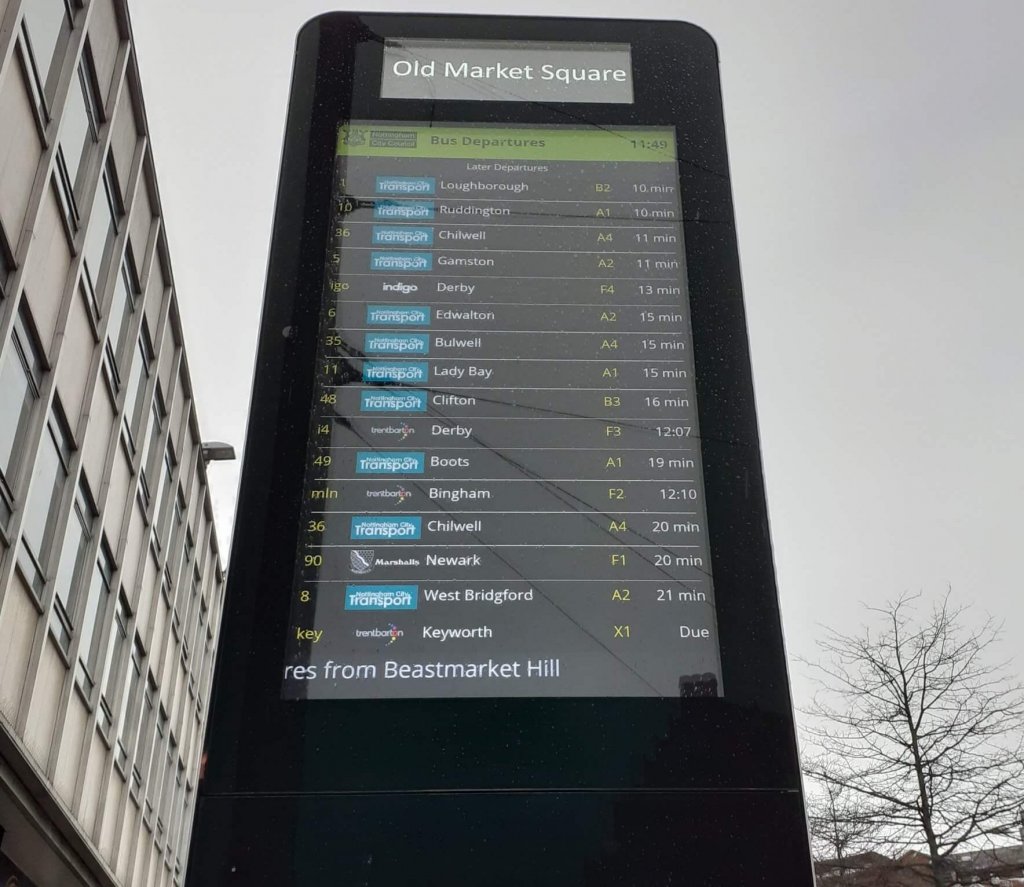
Upgrades to the back-office system
The second project is to upgrade a number of network-wide back-office systems that deliver live journey information by gathering, storing, processing, and sending out “real time” live bus and tram journey data.
A single content management system (CMS) will replace the current ‘patchwork’ system, which will allow for more sophisticated and efficient disruption information and messaging to be delivered to the vast network of real time displays.
We are also implementing a bespoke data broker and prediction engine service that is available to all bus operators. The data broker will take in vehicle location data which the prediction service then uses, along with historical data around journey times and traffic conditions, to predict departure times at each bus stop through a set of complex algorithms. The data broker will also allow more operators to display cancellation messages for services that won’t be running as scheduled.
These upgrades will also allow us to share service data with our third-party partners who have the technology to provide online or mobile app journey planning solutions and make data as open and easily available as possible.
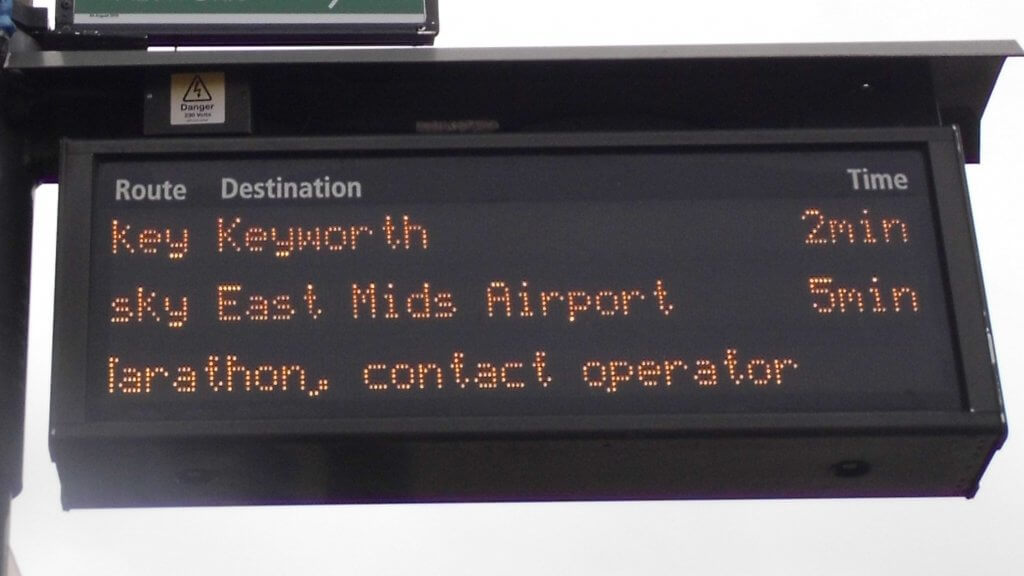
Benefits to you and your community
The display and back office upgrades are designed to increase passenger confidence in the real time information we provide and encourage people to travel on our extensive network of reliable services, supported by accurate real time information. Through increased public transport use, the project will also support the sustainable growth of our communities and significantly contribute to the Council’s carbon neutral plans and local air quality objectives.
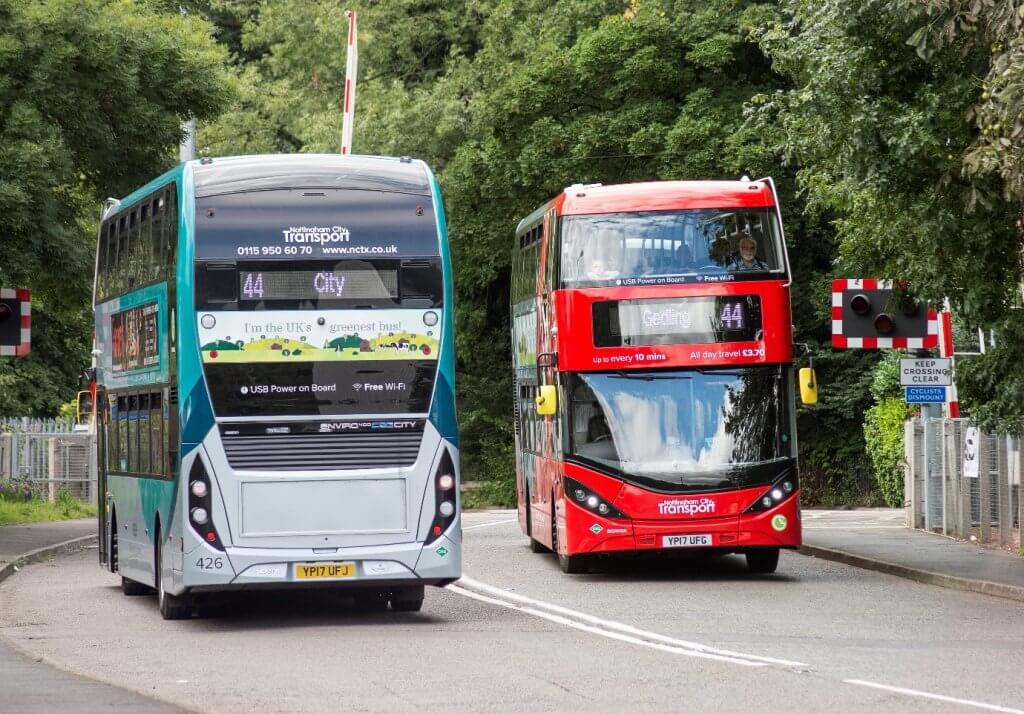
The most significant benefits of the project are:
- Improving passenger confidence in bus reliability
- Making journey planning simpler and more accessible
- Improving the management of bus services
- Reducing the amount of hardware maintenance needed
- Improving air quality by reducing the need for privately owned vehicles and encouraging the use of public transport
- Reducing the carbon footprint of bus displays
Key dates and disruptions
The upgrade work will only cause minor disruptions to service and most display upgrades will be carried out outside of peak hours. Where disruptions to service are anticipated, these will be communicated in advance through the Let’s Keep Nottingham Moving channels.
You can look out for the results of the project on the following dates:
- December 2022: Data broker goes live
- January 2023: CMS goes live
- May 2023: Final display upgrades
- 2023: Wayfinder journey planning totem installed outside of Nottingham Railway Station
Have your say
If you want to find out more about the real time information system and upgrade projects, you can contact us by emailing realtime@nottinghamcity.gov.uk.


